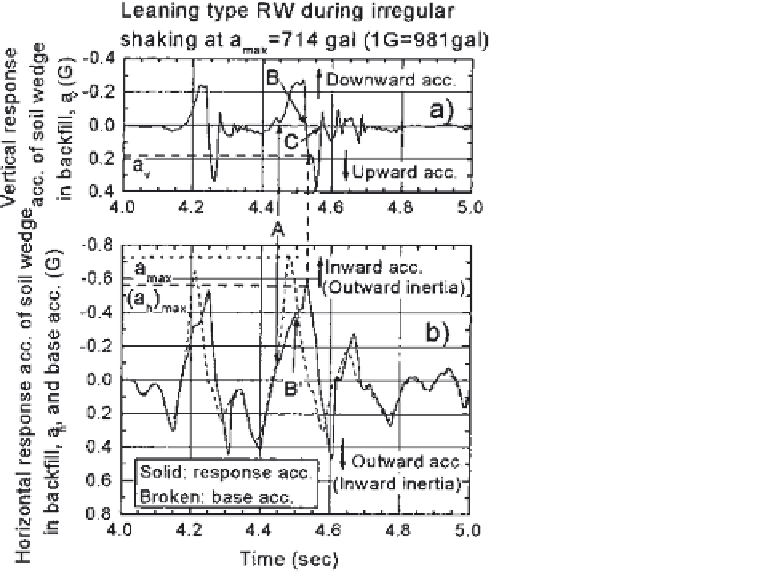Geoscience Reference
In-Depth Information
observed in the irregular shaking tests. On the other hand, after the formation of
the failure plane, a sudden reduction in the backfill and peak base acceleration
response acceleration took place in the sinusoidal shaking tests, which may also
be due to the sliding of the soil wedge along the failure plane.
It should also be noted that the horizontal response of the soil wedge above the
failure planewas accompanied by its vertical response, as typically shown in Fig. 21.
In this case, the first failure plane had been already formed in the backfill during the
previous shaking steps, and several large cycles of horizontal base acceleration
induced a relatively large response of the soil wedge not only in the horizontal but
also in the vertical directions. The peak horizontal response acceleration was
mobilized after a certain phase lag after the peak base acceleration, and, as
mentioned above, the (a
h
)
max
-value was smaller than the a
max
-value. When the
outward inertia force was acting on the soil wedge, it was also subjected to vertical
upward inertia force (i.e., downward acceleration) in the beginning, which was
reversed into the downward inertia force (i.e., upward acceleration) in the later stage.
Figure 21
Typical response accelerations of soil wedge above failure plane for leaning-
type RW during irregular shaking.









Search WWH ::

Custom Search